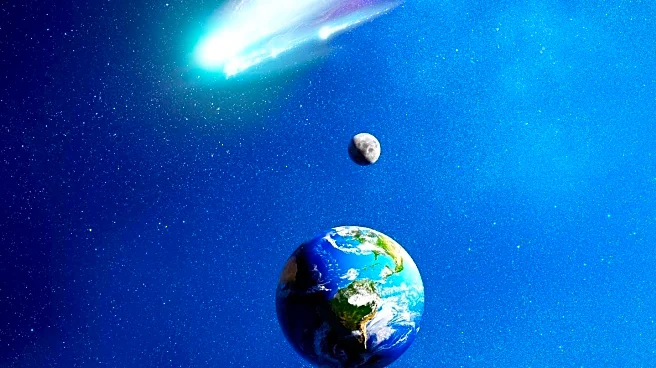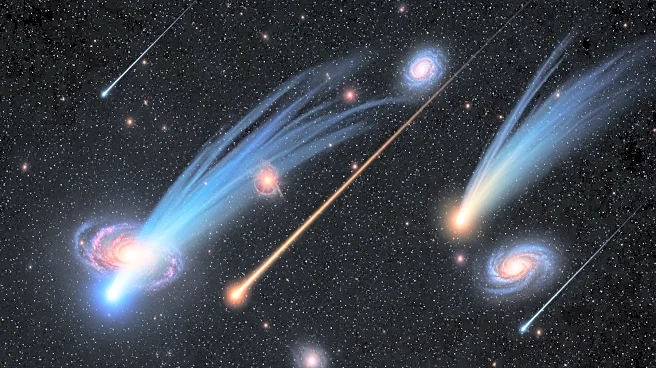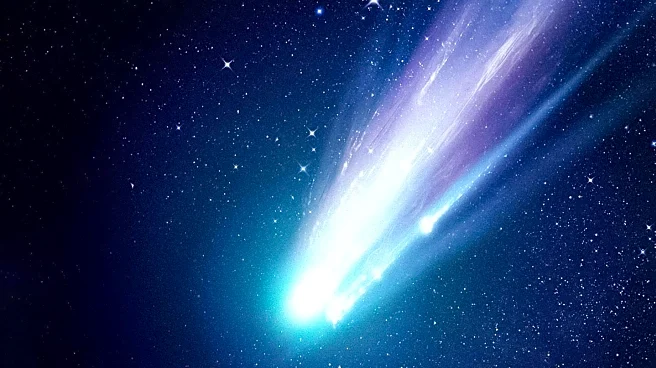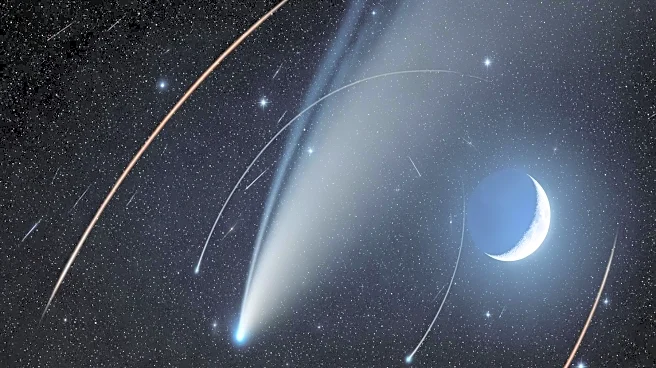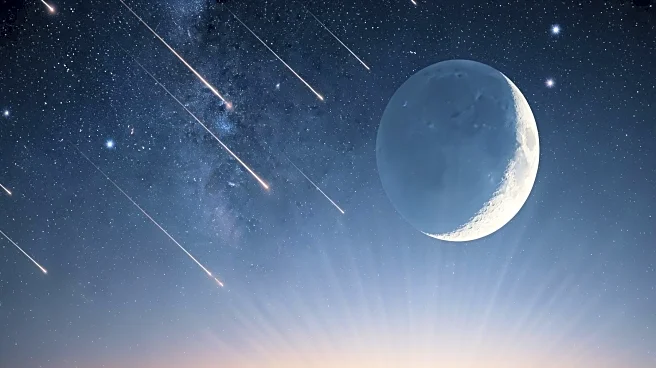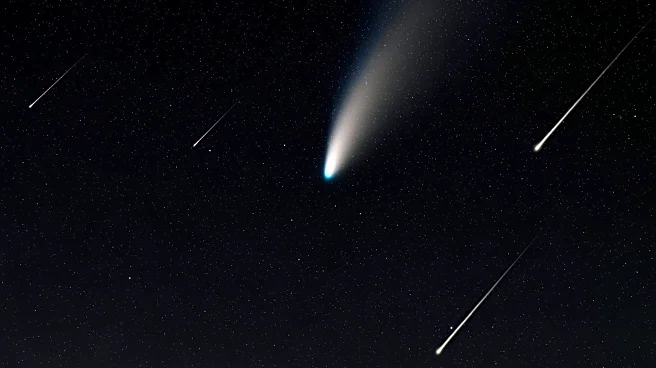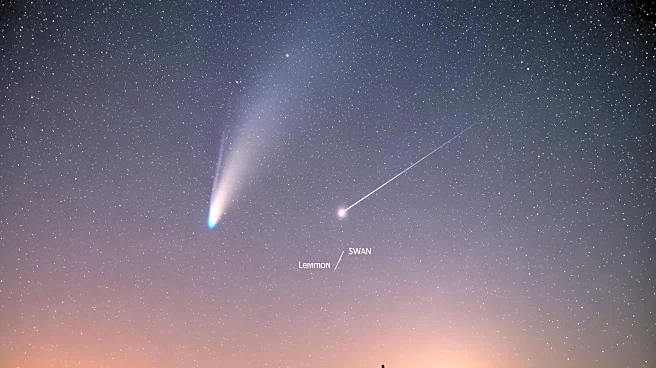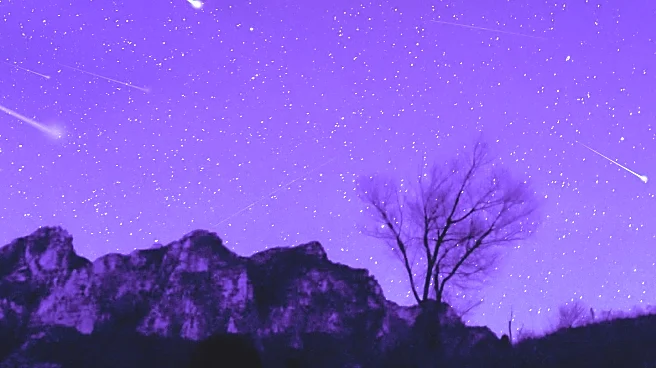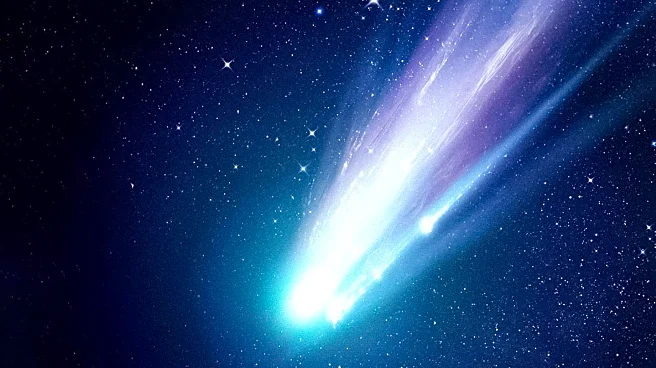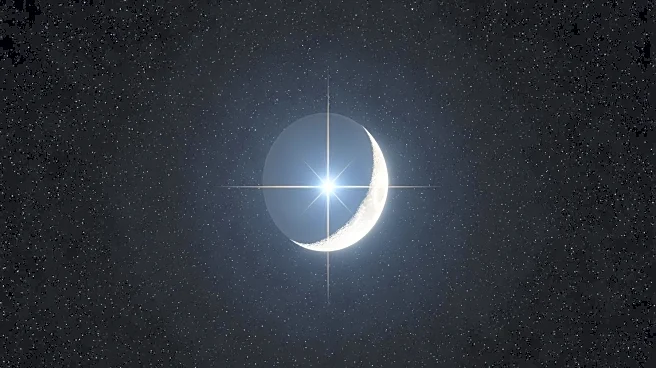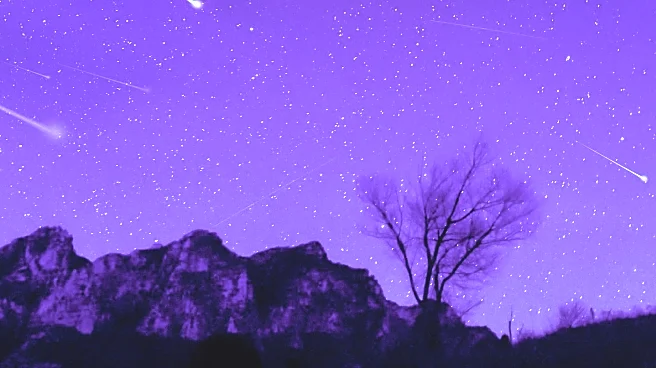What's Happening?
Comet Lemmon is approaching Earth, with its closest approach occurring on October 21, 2025, coinciding with the new moon. The comet is expected to brighten significantly near Halloween and continue to be visible
through early November. Stargazers can view Comet Lemmon in the evening sky near bright stars like Arcturus in the constellation Boötes by looking northwest after sunset. The comet will not make another close approach for approximately 1,150 years, making this a rare opportunity for observation.
Why It's Important?
The visibility of Comet Lemmon presents a unique opportunity for astronomers and enthusiasts to observe a celestial event that will not occur again for over a millennium. This event can stimulate public interest in astronomy and science, encouraging educational activities and community engagement. The comet's appearance also coincides with other astronomical events, such as the Orionid meteor shower, providing a rich experience for stargazers. The rarity of such events underscores the importance of preserving dark skies for astronomical observations.
What's Next?
As Comet Lemmon continues its journey across the sky, astronomers and enthusiasts will monitor its brightness and trajectory. Observatories and astronomy clubs may organize viewing events to maximize public engagement and education. The comet's visibility near Halloween could lead to themed events and activities, enhancing public interest in astronomy. Additionally, discussions about the next appearance of Halley's Comet in 2061 may arise, sparking curiosity and anticipation for future celestial events.
Beyond the Headlines
The appearance of Comet Lemmon highlights the importance of dark sky preservation, as light pollution can hinder the visibility of such celestial events. Efforts to reduce light pollution can benefit both amateur and professional astronomers, as well as contribute to environmental conservation. The comet's long orbital period serves as a reminder of the vastness and complexity of the universe, inspiring awe and curiosity about space exploration and scientific discovery.
